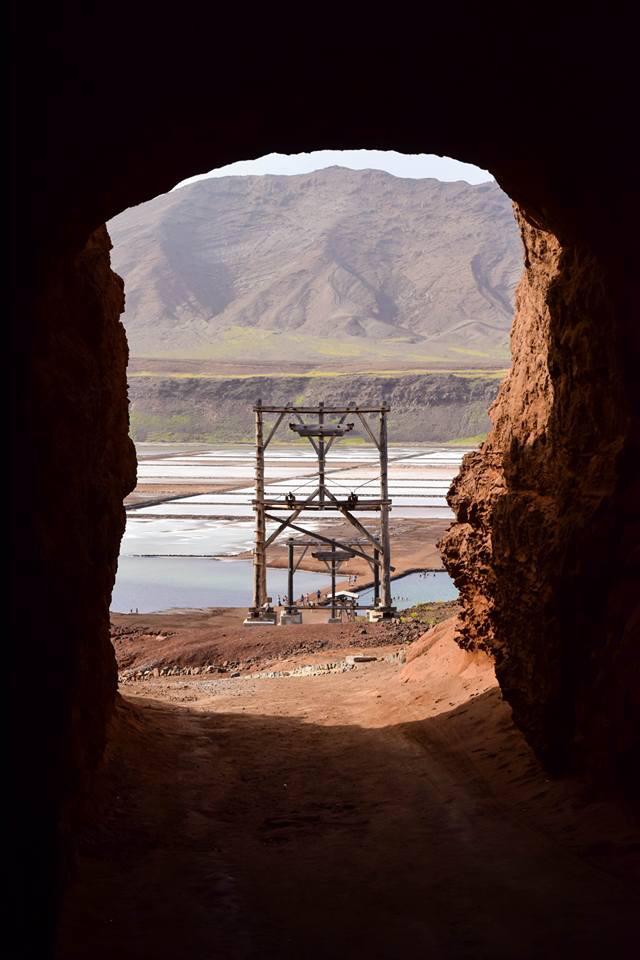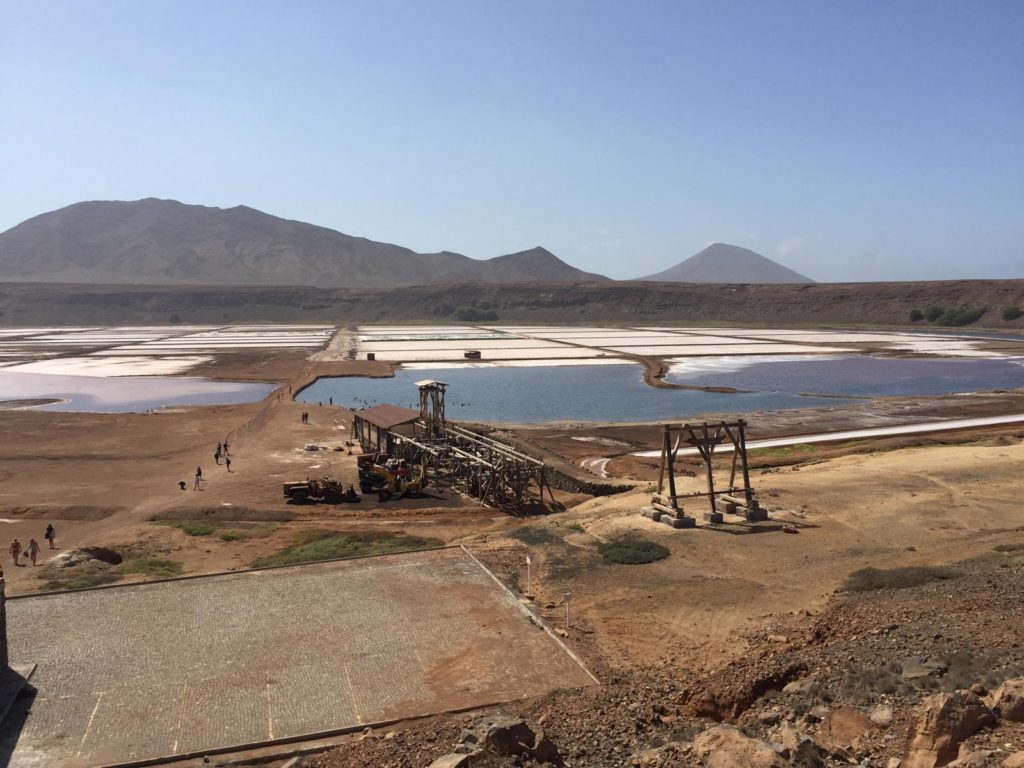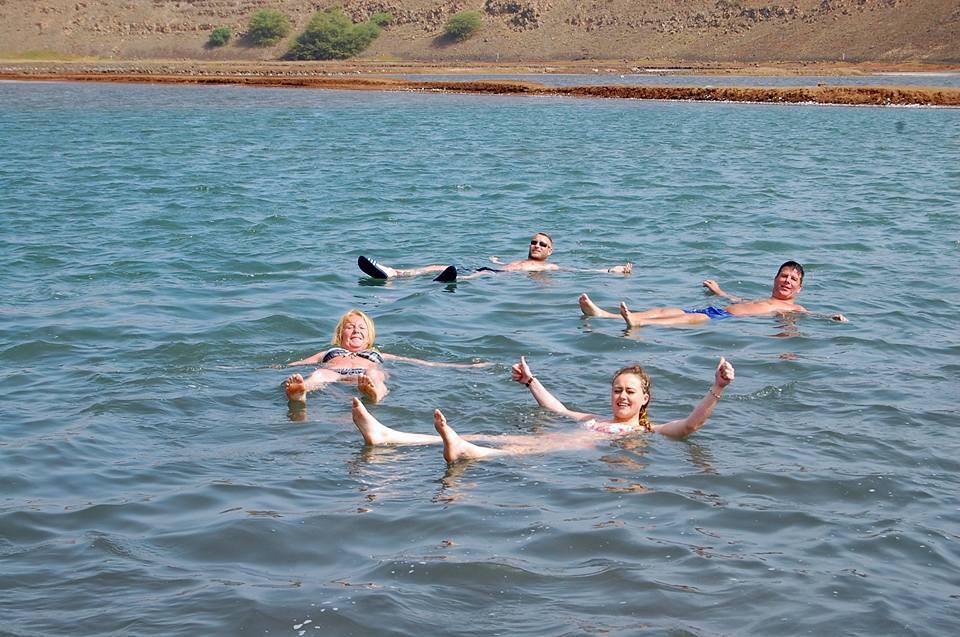Sal (the Portuguese name for salt) is named after a natural salt lake formed in the crater of Pedra de Lune Volcano. For 200 years, until 1999, salt was mined from the lake and exported overseas.

The crater of the volcano is 900 metres in radius, the highest point is 39 metres above sea level, the lowest point is far below sea level and the lowest point on all of the Cape Verde islands. The salt lake has formed naturally in the crater of the volcano with water from the nearby ocean. From 1833 – 1921 the salt was transported by animals, in 1921 a 1,100 metre long cable car was installed. The cable car had a capacity to transport 25 tons of salt from the bottom to the top per hour and parts of the wooden frame are still in place today. Production of the salt on this scale stopped in 1985, due to cheaper alternatives being sourced around the world. Sal still mines salt for internal use within the Cape Verde Islands, mainly at the salt ponds in Santa Maria. The production in Santa Maria is nowhere near this scale and is farmed manually by hand.

Whilst on the island tour we will take you to the salt lakes to float away your troubles and years! The “Salinas” contain the second highest saltwater content in the world. You will leave looking and feeling 10 years younger!
